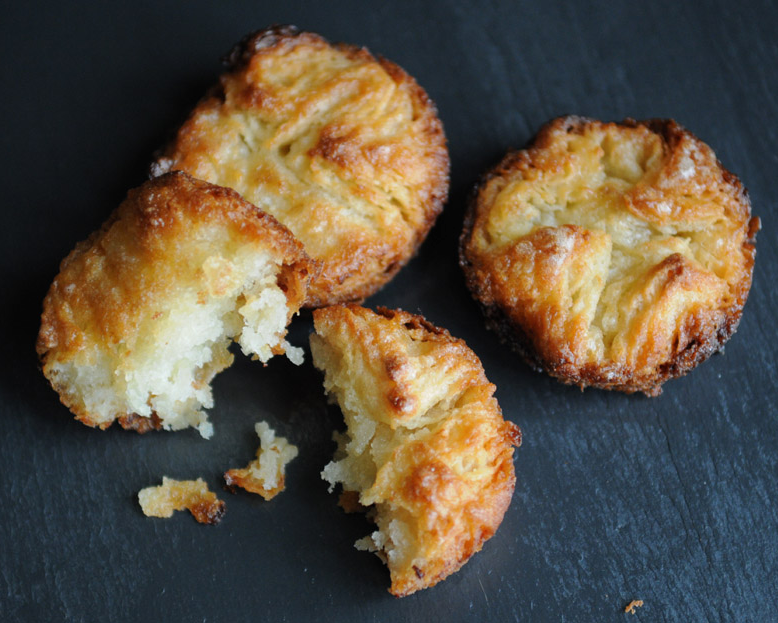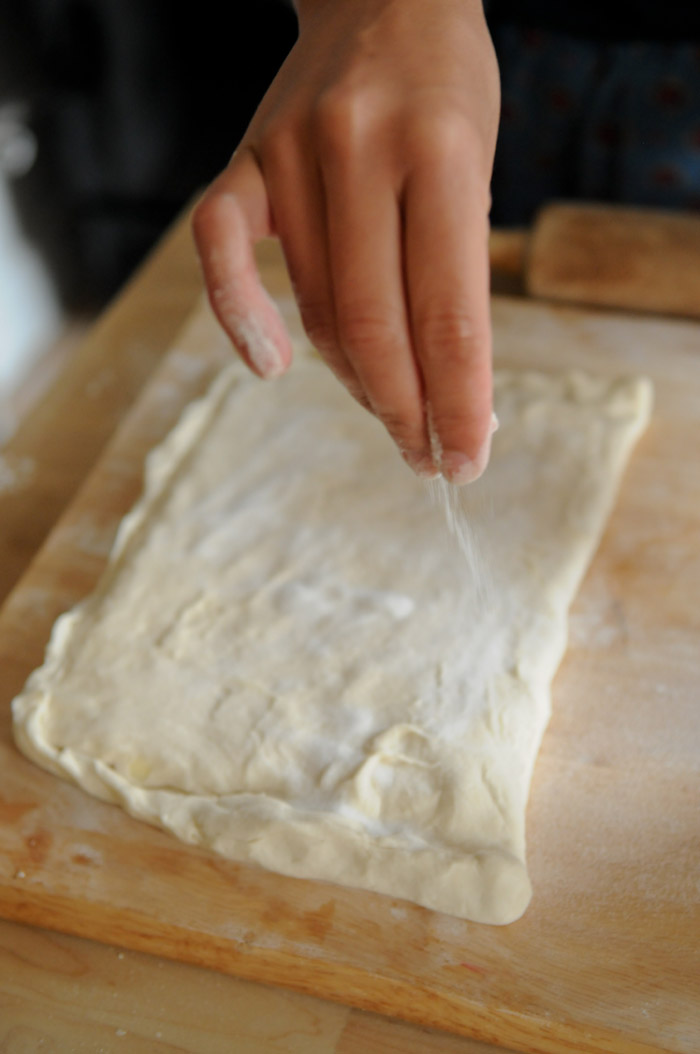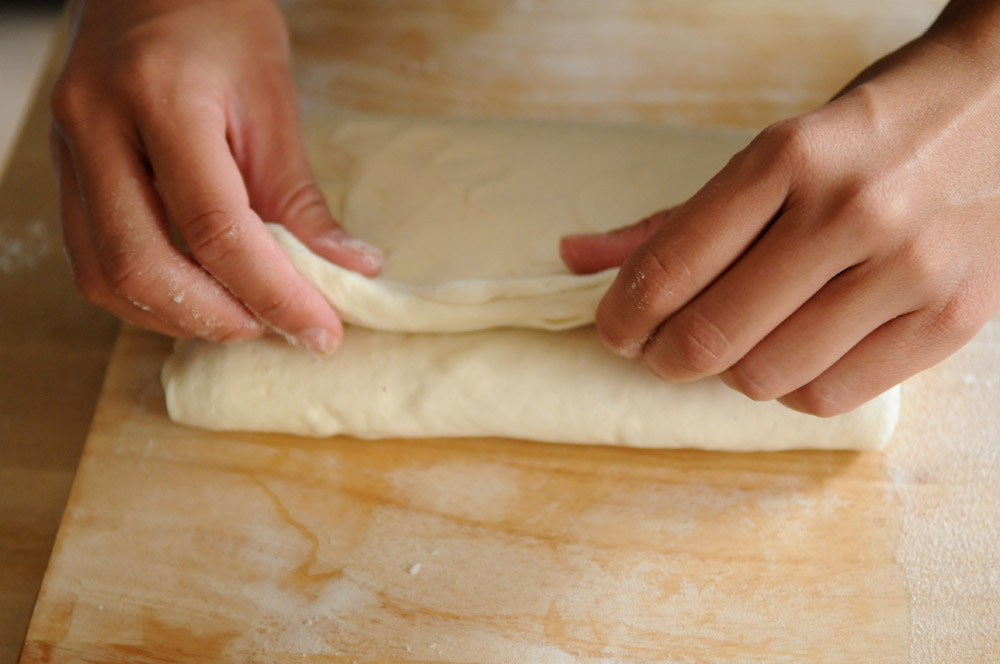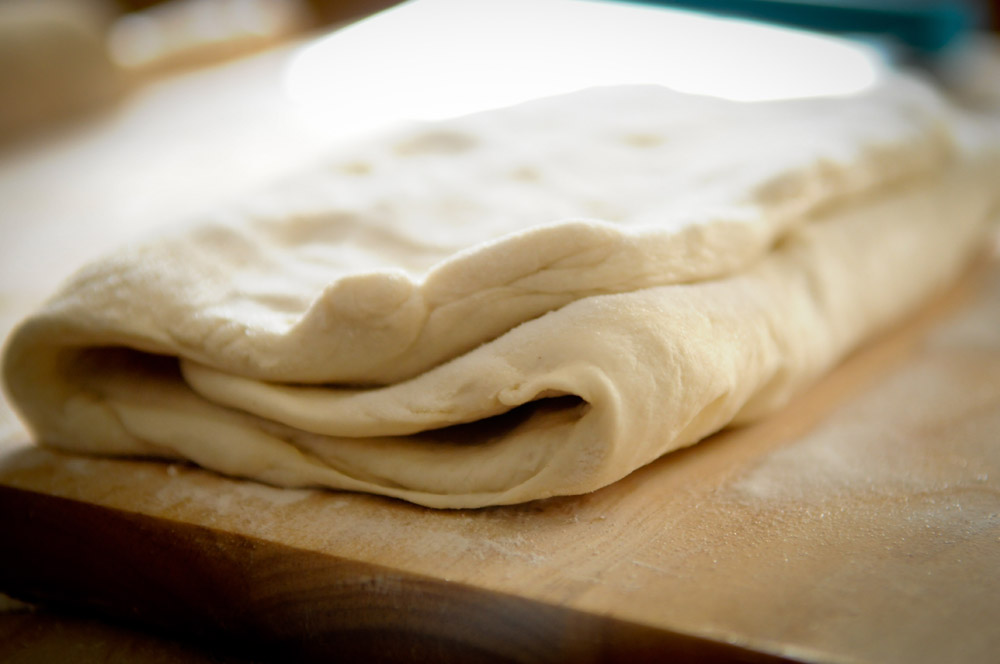Kouign Amann
the little French pastry that got me onto MasterChef...
While I love cooking of all kinds, there is no denying that baking pastries and sweets is my strong suit. Several months ago, when I heard about the MasterChef season 4 open calls I was conflicted. I had what I wanted to bake in mind, but I also felt like a dessert might be more easily overlooked than say, a fancy seafood dish. So I researched and brainstormed and went through hundreds of ideas for weeks but couldn't get the Kouign Amann out of my head.
I fell in love with these when I tried them for the first time on my birthday 3 years ago at Les Madeleines while in Salt Lake City for flight attendant training. While I usually overlook non-chocolate desserts this flaky, buttery, deeply caramelized pastry was simply irresistible. I had never seen or heard of them before, even after living in Paris. Kouign Amann literally means "butter cake" en francais, and come from Brittany. These are so popular that they often sell out very early in the morning, and people are willing to buy them online for up to $40.00 for just a couple. So are they worth the hype? The complicated procedure? And most of all all of the calories involved in over 2 sticks of butter? Imagine a warm, crispy on the outside and deeply caramelized croissant with layers and layers of thin pastry and butter on the inside, and I think you have your answer.
So I ultimately decided to stay true to my cooking style and make these for the open call. At first I was terrified of making a laminated dough. That kind of thing is for fancy french pastry chefs with years of training! But I conquered my fear and even though it turned out amazing on my first try, I tested it close to 20 times before the audition (I spent quite a bit of money on butter...). Each time adjusting quantities of butter, sugar, flour, resting times, and even the type of butter, flour, and sugar used. So rest assured here you have the most perfected version of this recipe. There was something so soothing and therapeutic about making these for the first time again after so many months, and knowing it by heart still. For my audition, I added pistachios to the dough but I wanted to stay pure and simple for this post. There are variations that include chocolate, fruit, and fruit jams but I recommend making them at least once before experimenting, as they are extremely rich.
So now that you have the dish that got me into the top 100 of MasterChef season 4 out of over 42,000 hopefuls from all over the United States, don't forget to tune in to the two hour premiere on FOX May 22nd to see me compete!
1
In a mixing bowl, stir the yeast and a pinch of sugar into the warm water until it has dissolved. Rest for 10 minutes. After 10 minutes, make sure your mixture is foamy. If it is not, your yeast is no longer active.
2
Slowly add in cake flour and salt. Dough should be shaggy and sticky.
3
Dust countertop with flour, and knead the dough for about 5 minutes until it is smooth and stretchy. This is a fairly sticky dough, but add extra flour sparingly- about 1 tablespoon at a time as you are kneading until it gets just to the point of no longer sticking to your hands. Using too much flour in baking is never good.
4
Place ball of dough in a bowl brushed with melted butter so it does not stick to it while it's rising. Cover with a kitchen towel, and place somewhere warm for an hour. Your dough should have doubled in size.
5
While your dough is rising, make your butter block Traditionally, bakeries use something called a butter block when making laminated dough such as croissants or kouign-amann. You can also cut the butter into thin slices and place them close together but I found I got the best results with the block. Use the best quality European-style salted butter you can get your hands on.
Soften your butter by putting it into a food processor and pulsing until smooth. Be careful not to melt it. Spread evenly on a large sheet of wax paper in a rectangular shape. I made mine slightly smaller than a piece of printer paper. Fold in the corners of the paper, and use a rolling pin to roll the butter into the corners to get a more even rentangle (doesn't have to be perfect, though). Refrigerate for at least 25 minutes.
6
Take your butter block out of the refrigerator 5 minutes before you begin rolling out your dough.
7
On a lightly floured surface , roll your dough our into a rectangle, and place the butter block on one side. Sprinkle a pinch of sea salt over the butter.
8
This is the slightly tricky part since the dough is so sticky, so use a pastry cutter to help lift the dough off the floured surface so one side is folded over the over and you have yourself a little dough envelope filled with butter. Seal the edges by pinching them together so your butter doesn't escape. We wouldn't want that now, would we?
9
Clean your surface of the flour and sprinkle generously with sugar. Sprinkle the top of your dough with sugar as well.
10
Roll the dough into a larger, thinner rectangle, then fold your dough into thirds. Sprinkle with sugar, wrap with plastic wrap and refrigerate for 45 minutes.
11
Preheat your oven to 400 degrees.
12
Remove dough from refrigerator. You may notice that the sugar and moisture from the dough have created a small amount of "syrup", that leaks from your dough, this is normal.
13
Roll the dough into a larger, thinner rectangle, then fold your dough into thirds. Sprinkle with sugar, wrap with plastic wrap and refrigerate for 45 minutes. (this is the same as step 10)
Take out of the
refrigerator and on a surface sprinkled with sugar, roll out into a rectangle
for the last time. Use a pastry cutter or very sharp knife to cut dough into
squares slightly larger than the containers you will be using to bake
them in (I used 4 ounce ramekins)
14
Brush ramekins with a thin layer of melted butter, place dough square in the ramekin, and fold the corners in. Sprinkle each one with more sugar.
15
Bake at 400 degrees for 15 minutes or until the tops are a deep golden brown. Allow to cool for several minutes before running a butter knife around the edges to make them easier to remove.
zero calories, in case you were wondering
Kouign Amann
Makes about 10 small pastries
1 tablespoon active dry yeast
3/4 cup warm water
1 1/2 teaspoons Sea salt
2 1/4 cups cake flour
2 cups caster sugar, divided
2 sticks european style salted butter for butter block, plus about 1/2 stick melted for brushing bowl and ramekins
1.In a mixing bowl, stir the yeast and a pinch of sugar into the warm water until it has dissolved. Rest for 10 minutes. After 10 minutes, make sure your mixture is foamy. If it is not, your yeast is no longer active.
2.Slowly add in cake flour and salt. Dough will be shaggy and sticky.
3.Dust countertop with flour, and knead the dough for about 5 minutes until it is smooth and stretchy. This is a fairly sticky dough, but add extra flour sparingly- about 1 tablespoon at a time as you are kneading until it gets just to the point of no longer sticking to your hands. Using too much flour in baking is never good.
4. Place ball of dough in a bowl brushed with melted butter so it does not stick to it while it's rising. Cover with a kitchen towel, and place somewhere warm for an hour. Your dough should have doubled in size.
5. While your dough is rising, make your butter block Traditionally, bakeries use something called a butter block when making laminated dough such as croissants or kouign-amann. You can also cut the butter into thin slices and place them close together but I found I got the best results with the block. Use the best quality European-style salted butter you can.
Soften your butter by putting it into a food processor and pulsing until smooth. Be careful not to melt it. Spread evenly on a large sheet of wax paper in a rectangular shape. I made mine slightly smaller than a piece of printer paper. Fold in the corners of the paper, and use a rolling pin to roll the butter into the corners to get a perfect rentangle. Refrigerate for at least 25 minutes.
6. Take your butter block out of the refrigerator 5 minutes before you begin rolling out your dough.
7. On a lightly floured surface , roll your dough our into a rectangle, and place the butter block on one side. Sprinkle a pinch of sea salt over the butter.
8. This is the slightly tricky part since the dough is so sticky, so use a pastry cutter to help lift the dough off the floured surface so one side is folded over the over and you have yourself a little dough envelope filled with butter. Seal the edges.
9. Clean your surface of the flour and sprinkle generously with sugar. Sprinkle the top of your dough with sugar as well.
10. Roll the dough into a larger, thinner rectangle, then fold your dough into thirds. Sprinkle with sugar, wrap with plastic wrap and refrigerate for 45 minutes.
11. Preheat your oven to 400 degrees.
12. Remove dough from refrigerator. You may notice that the sugar and moisture from the dough have created a small amount of "syrup", that leaks from your dough, this is normal.
13. Repeat step 10 with your dough. Take out of the refrigerator and on a surface sprinkled with sugar, roll out into a rectangle for the last time. Use a pastry cutter or very sharp knife to cut dough into squares slightly larger than the containers you will be using to bake them in (I used 4 ounce ramekins)
14. Brush ramekins with a thin layer of melted butter, place dough square in the ramekin, and fold the corners in. Sprinkle each one with more sugar.
15. Bake at 400 degrees for 15 minutes or until the tops are a deep golden brown. Allow to cool for several minutes before running a butter knife around the edges to make them easier to remove.

Roasted Balsamic Vegetables













